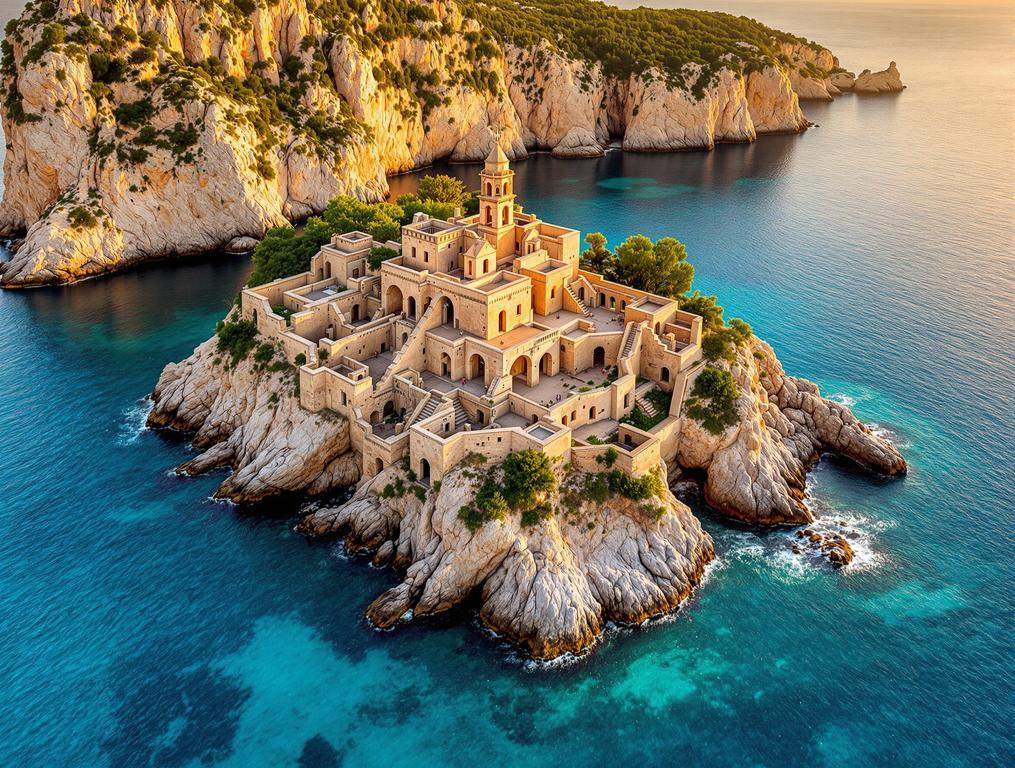The tiny limestone speck appears on the horizon as our boat skims across the Mediterranean. As we approach, I can make out its rough contours and the faint outline of ancient ruins. This is Tinetto, a 0.0181 square mile uninhabited Italian microisland that most travelers to the Ligurian coast will never see. Despite being just 3 kilometers from touristy Portovenere, this UNESCO-protected dot houses archaeological treasures dating back to the 10th century yet receives virtually no visitors compared to its famous neighbors.
A Miniature UNESCO Island Only Accessible by Special Boat
I step carefully onto Tinetto’s rocky surface, aware that I’m standing on one of Italy’s most exclusive protected spaces. At just 4.69 hectares, this island is smaller than a standard football pitch yet holds remarkable historical significance.
“It’s a postage stamp with the weight of centuries,” our guide Marco whispers as we approach the remains of an early Christian oratory. The weathered stone walls tell silent stories of medieval monks who sought isolation here, contrasting sharply with the Instagram-ready villages of nearby Cinque Terre.
What makes Tinetto extraordinary is the density of its historical treasures. Despite having zero permanent residents, this tiny rock contains monastic ruins and an ancient chapel that hint at its importance in early Mediterranean Christianity. The island rises to a modest 15 meters above sea level, yet its cultural significance towers over many larger inhabited islands.
Like other small islands with outsized historical importance, Tinetto proves that cultural significance isn’t measured by size.
An Uninhabited Rock with an Exclusive Resident
Beyond its archaeological treasures, Tinetto harbors another secret – a species found nowhere else on Earth. The Podarcis muralis tinettoi, an endemic lizard subspecies, has evolved in perfect isolation on this limestone outcrop.
Our guide points out a small reptile darting between the rocks, its coloration perfectly matching the island’s terrain. “This lizard has adapted to survive on minimal resources,” Marco explains. “It’s the true master of Tinetto.”
“I’ve visited UNESCO sites worldwide, but nowhere else can you stand on an entire protected island in ten minutes while watching an endemic species sunbathe on thousand-year-old ruins.”
Unlike the dramatic geological formations of other Mediterranean heritage sites, Tinetto’s allure lies in its understated presence. The island’s protection as part of a marine sanctuary since 1997 means visitor numbers are strictly controlled, creating an exclusivity that most of Italy’s famous destinations have long surrendered.
The Mediterranean’s unique geology has shaped human settlements for millennia, from Tinetto’s island monastery to the mainland’s dramatic coastal villages. Each wave that laps at the island’s shore continues the slow erosion that has shaped this landscape since ancient times.
What the Guidebooks Won’t Tell You
Visiting Tinetto requires planning that most Cinque Terre day-trippers never consider. Boats depart only from Portovenere’s Môle Doria pier, and tours allowing landing on Tinetto are limited to May through September when seas are calmest.
Book your tour at least 48 hours in advance during high season, as the limited boats fill quickly. Most tours cost between €80-150 and include visits to the larger neighboring islands of Palmaria and Tino.
The best experience comes during weekday mornings when fewer boats circulate. Bring a zoom lens for photography – your time on the island is limited to just 10 minutes to minimize environmental impact.
History enthusiasts seeking similar medieval treasures in dramatic settings might also explore medieval villages perched on dramatic limestone cliffs across the Mediterranean region.
As our boat pulls away, I watch Tinetto shrink back to an insignificant speck on the horizon. My wife Sarah captures one final photograph as the setting sun bathes the ancient stones in golden light. In an age where over-tourism threatens Italy’s most celebrated treasures, this tiny uninhabited rock represents something increasingly precious – a place where history breathes freely, undisturbed by souvenir shops and selfie sticks. The true Italy isn’t always found where the crowds gather, but sometimes on the smallest, quietest fragments of its ancient landscape.
